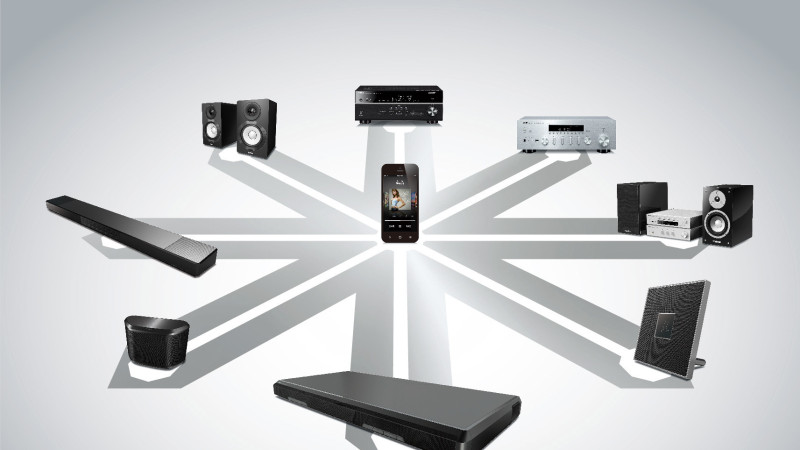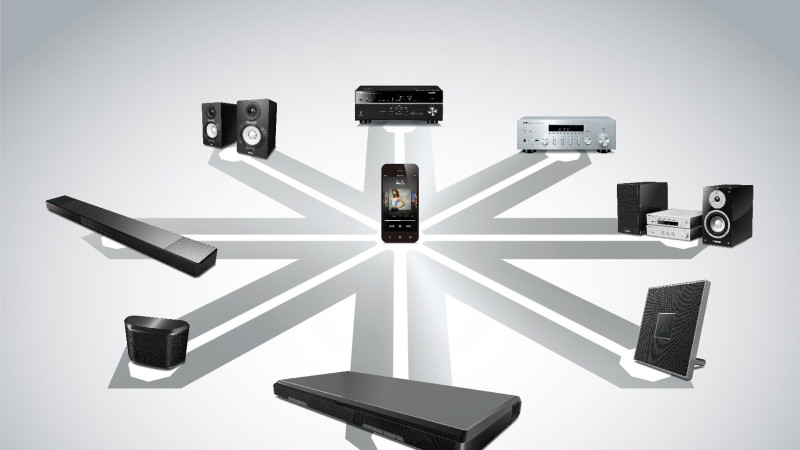

Multiroom audio - the distribution of music in different rooms - is actually not a new phenomenon. Bose, Revox and B&O already had such "music distributors" in their range in the eighties, and systems designed and installed by experts have been around even longer. All of these early approaches have in common that they distributed a purely analog music signal over conventional copper cables. The effort required for installation was correspondingly large, and if you had not thought of cable ducts for the new building or the last major renovation, subsequent installation was practically impossible.
With the spread of network technology in the home, and above all the ubiquitous introduction of wireless LAN (WLAN) radio technology, there are now completely different ways of making music available elegantly and conveniently in several rooms. A small American startup was one of the first to recognize this trend and introduced the first wireless multiroom system back in 2005. And when they also integrated a small rebellious music provider called Napster into their system, so that its users had practically every song in the world available on demand at any time, the triumphant advance of the Americans was unstoppable. We are of course talking about Sonos, who not only developed this market first but also dominated it unchallenged for a long time. Of course, other companies have long since jumped on this unmistakable (and profitable) trend. Even the "classic" hi-fi manufacturers, which usually grind slowly, have now turned, so that there are a number of interesting alternatives to Sonos on the market. The selection is so large that it is not always easy to keep track of things and make the right decision. It is all the more astonishing that there are hardly any serious comparisons between current systems in the current media world. So we did it ourselves and put together the most important facts about the most common systems.
For this comparison, we took a closer look at the following systems: Yamaha MusicCast , Bluesound , Heos by Denon , Sonos and Bose SoundTouch . And, yes, four of these five systems are in our program, and that is certainly no coincidence. After all, we think hard about which products and / or solutions to include in our range. So it's not surprising that we have four of the most important systems on the market in our portfolio. Especially since these four systems all have very different strengths and weaknesses and thus complement each other in our offer, since they cover different areas of application. The comparison and above all the overview tables below are essentially based on our own experience with the individual systems as well as on the publicly available product information. In some cases, however, we wanted to delve a little deeper into the subject matter and asked the manufacturers for additional information, for example about the latency times or the audio quality of the radio transmission. Unfortunately not all providers were able or willing to answer our questions, this is indicated in the tables.
As so often and therefore not surprisingly, our comparison showed that the famous "egg-laying woolly milk pig", i.e. the one solution for all requirements and customers, does not exist. Rather, all multiroom systems considered here have clear strengths and weaknesses that make them more or less recommendable for certain applications. You can find these details in the overview tables at the end of the article, so that you can form your own judgment as to which solution suits you best. The following summaries of the individual systems are intended for everyone who finds this a bit too tedious. And, of course, the AUDITORIUM team in Hamm, Münster or Hamburg is always available for detailed advice on the subject.
It almost seemed as if one of the most traditional Japanese hi-fi manufacturers had completely overslept the current multiroom trend. And that although Yamaha had already introduced a server-based, wireless music system called MusicCast in 2003, which was way ahead of its time and accordingly unsuccessful. But when the Japanese revived the name at IFA 2015, the experts were amazed. Obviously, Hamamatsu did not wait idly, but developed diligently. The most important difference between MusicCast and practically all other multiroom systems is the fact that it is not actually a stand-alone system. Rather, the MusicCast technology has been integrated into numerous "conventional" products right from the start, from classic stereo amplifiers, through AV receivers and sound bars to the pretty RESTIO ISX-80 clock radio. There are also individual components, such as the compact loudspeaker WX-030 or the stereo loudspeaker pair NX-N500, so that smaller systems can also be easily implemented with MusicCast. No less than 26 products equipped with MusicCast were already available at launch, and this year the program will be expanded considerably. Another special feature of the MusicCast solution is the fact that all MusicCast devices can be source and receiver at the same time. That sounds unspectacular at first, but opens up fascinating possibilities when you take a closer look at it. Because every MusicCast device in the system automatically makes all locally connected sources available to the network so that they can be accessed from anywhere. The FM tuner of the kitchen radio is available as a music source throughout the house, as is the external Blu-ray player or the set-top box connected to the AV receiver. This opens up such a multitude of possible combinations that a more or less complete list would go beyond the scope of this overview. But anyone who has had to go to the bathroom during an exciting soccer game will appreciate the possibility of being able to "take" the TV sound to another room ... And finally, MusicCast offers another unique feature: Each MusicCast device can receive AND transmit Bluetooth. This means that you can wirelessly use existing Bluetooth headphones anywhere in the house to listen to music from any source. MusicCast is by far the most extensive and flexible system in this comparison and therefore the first choice for everyone who wants to combine convenient multiroom comfort with real stereo and home cinema systems. However, this approach is also the main disadvantage of the system. Because if you only want to listen to Spotify wirelessly in two or three rooms and do not value "large" systems with separate speakers, the range from Yamaha is limited to a maximum of two or three devices.More information in the AUDITORIUM
Like NAD and PSB Speakers, Bluesound belongs to the Lenbrook Group and is therefore also distributed by Dynaudio in Germany (like NAD). The approach of Bluesound is clearly designed for the best possible sound quality; Bluesound is the only system in comparison that already supports MQA and real hires streaming for all end devices in multiroom operation (with MusicCast and Heos, for example, only the main source receives a real hires signal, all other devices in the network only receive a 48kHz / 16bit Downmix. With Sonos the radio transmission is generally limited to 48kHz / 16bit. The extent to which it makes sense to play a hires signal on extremely compact boxes like the Bluesound products is a topic for another discussion. The fact is, however, that the chic and elegantly crafted bluesound speakers sound extremely good with any source. Logically, Bluesound integrates more high-quality music services with Qobuz, HD Tracks and HiresAudio than any other multiroom system. With the wireless integrated amplifier Powernode 2 and connected external speakers, Bluesound can then exploit the quality advantage of the transmission earlier. And for all those who still have to archive their CD collection but don't want to use a computer, the ripping server Vault 2 with built-in drive and automatic music recognition / management is a decisive argument. Bluesound is a very simple system with a manageable, yet sensible variety of products and a clear focus on high-resolution sound quality.More information in the AUDITORIUM
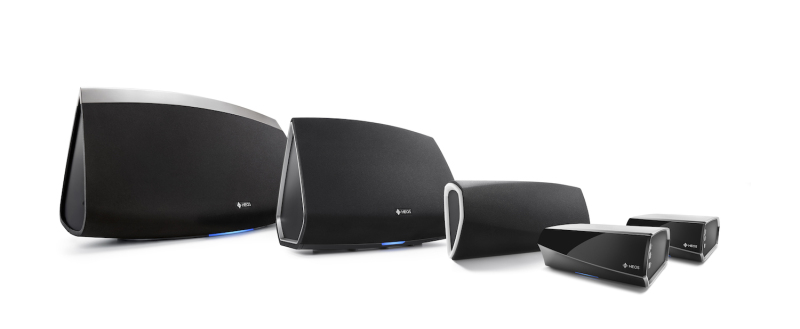
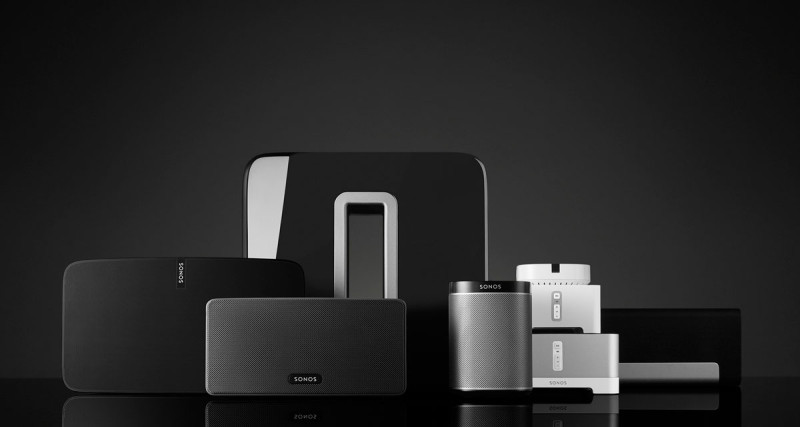
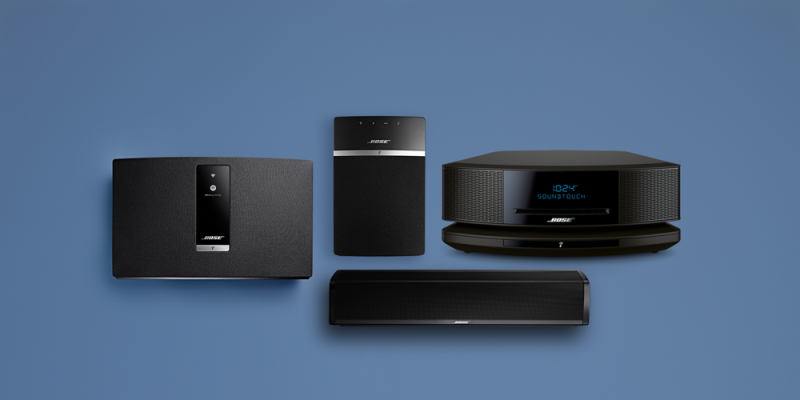
As already mentioned at the beginning, there is no such thing as "one" multiroom system for all requirements, but there is now a suitable system for everyone. It's still easy and cheap with Sonos, Heos is a slightly more expensive, but also a much stronger alternative. Bluesound goes one step further in terms of sound compared to both and offers an interesting additional function with the ripping server Vault 2. Yamaha's MusicCast is deeply integrated into the "real" hi-fi and home cinema world and is aimed primarily at all those who want to combine modern and convenient multiroom with the quality and appearance of classic systems. And of course this comparison is only a snapshot. If Denon brings the announced AV Reveiver with Heos, the cards in the MusicCast / Heos comparison will certainly be reshuffled. And Yamaha has a lot more plans with MusicCast that we are unfortunately not allowed to report on at this point ...
(On smaller screens, scroll left and right within the table, if necessary, to see all of the content.)
